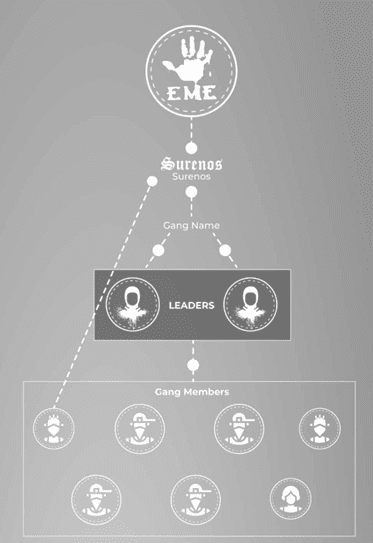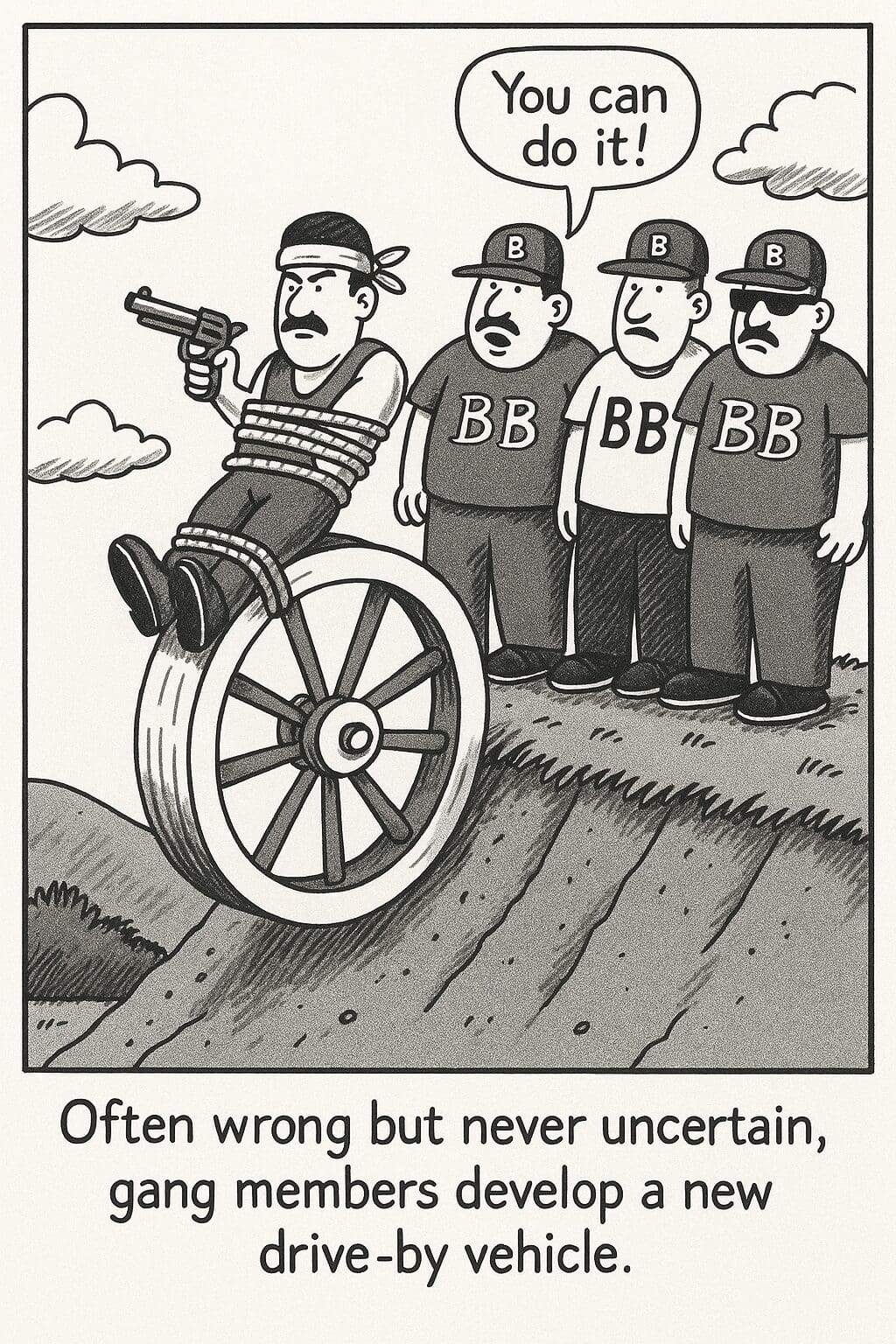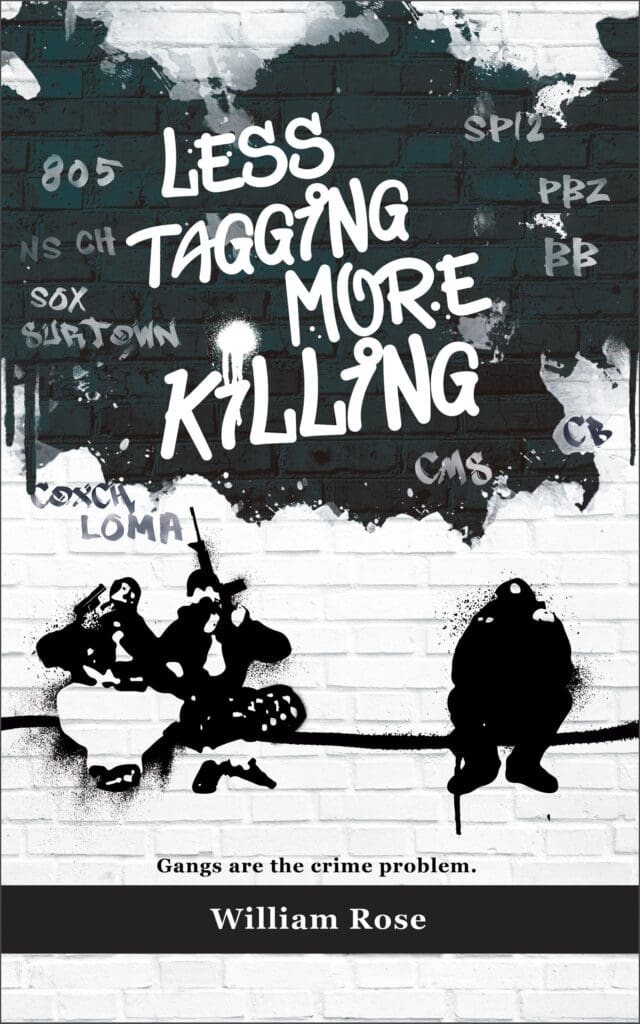What to Do About Gangs: A Street-Level Perspective
June 17, 2025

What to do about gangs? It’s easy to get lost in a jungle of academic jargon and overcomplicated models. I’ve read reports from the Bureau of Justice Assistance and the National Institute of Justice— titles like Police Response to Gangs: A Multi-Site Study and Addressing Community Gang Problems: A Model for Problem Solving. Academic researchers love to complicate what to do about gangs. They create models with names like “Comprehensive Gang Prevention Framework” and “Multi-Dimensional Intervention Strategy.” After reading them, I had to wonder: why so complicated?
Many of these gang studies are authored by academics who’ve never spent a day on the street, never interviewed a gang member, and never watched surveillance footage of a gang shooting. If you want clarity on what to do about gangs, common sense works a lot better than the SARA model or the Gang Problem Triangle.
I spent years investigating gangs, I’m no expert, but I know what works and what doesn’t. Learning what to do about gangs begins with knowing what they are: criminal enterprises driven by drugs and guns. Romanticizing gangs as youth movements driven by poverty or injustice may win you applause in academia, but it doesn’t help the kid being recruited to shoot someone for street cred.
One common refrain in academic circles is that gang members sell drugs out of desperation. Gang members are enthusiastic drug users and dealers with no intention of working a regular job. Based on hours of wiretaps, multiple interviews, jail calls, and social media snooping, I can tell you they’re not reluctant drug participants.
The truth about what to do about gangs is simpler than academics want to admit. Build a plan that focuses on two things: intelligence and suppression.
Step 1: Intelligence—Know Your Gangs
Generally local law enforcement under estimate the number of gang members in their communities by about 20%. If law enforcement doesn’t know how many gang members are in a city, they can’t measure success or failure. Let’s say you think there are ten members in a gang, but there are really twenty. That means you’re only targeting half the problem.
For each gang get a list of members from the police, the sheriff’s department, and prisons. These lists will differ, and that discrepancy reveals blind spots. These three sources of information will give you a more complete picture of the size of the gang/problem.
Conduct criminal databases for each gang member. Modern software makes this easier than ever. The criminal conduct gives the investigator areas to focus. For example who in the gang had been convicted of a felony. Any gang member with a felony conviction who is arrested with a firearm could be a candidate for federal prosecution. Data base check will tell you which gang members have active warrants. To learn about gang criminal histories read the blog Gangs and Violence.
Leverage Immigration Law
Check immigration status immediately. Another overlooked tactic is leveraging immigration law. Some gang members can be deported (approximately 90 in Ventura County), immigration law offers tools that most people ignore when considering what to do about gangs. If a gang member is here illegally and commits crimes, deportation removes the problem permanently.
Monitor social media religiously. Gang members post their guns, drugs, and gang signs. I learned about several suspected gang members who posed on social media wearing gang clothing. After seeing the photographs local detectives confirmed the associates were now gang members. Someone wearing gang clothing and flashing gang signs who was not a member risked physical violence.

Cross-Reference with Prison Records
Gang members don’t retire when they go to prison. California prisons have excellent intelligence on gang members. Gang members in prison network, recruit, and plan. Knowing who’s connected to whom inside gives you leverage outside.
It helps to create a gang chart. Show not just numbers, but faces, aliases, affiliations, and leadership. Demonstrating who’s incarcerated, who’s on probation/parole, who’s a felon, and who’s an associate and member of a prison gang like the Mexican Mafia or “EME.” Building effective charts and tracking felonies and affiliations gives law enforcement an edge. Knowing who’s in the gang, their status, criminal history, and connections to EME allows for targeted action. To learn more about prison gangs see the blog about La Eme.

Develop informants strategically. Gang loyalty is mythology. I’ve seen gang members sell out their “brothers” for pocket change. The key is finding the right motivation, money is good, but several informants want to make the community safer. Wondering what to do about gangs? Start by identifying who they are, then figure out who you can flip. Get more than three gang members in a room, and one of them hates the other two.
Step 2: Suppression—Make Gang Life Uncomfortable
The goal isn’t to eliminate gangs entirely. That’s unrealistic. The goal is to make gang membership so risky and unprofitable that fewer people choose it.
Effective suppression tactics include:
Using gang injunctions.
Gang injunctions—though controversial—work. Based on nuisance laws from 1913, they restrict gang activity in specific neighborhoods. Critics argue they’re unfair, but ask the residents who live in those areas whether they’d prefer nightly shootings or legal restrictions on known offenders. To learn more about gang injunctions see the blog Southside Chiques: A Violent Neighborhood.
Arrest Gang Members with Outstanding Warrants
This may seem obvious but creating a fugitive/gang task force will be constantly busy executing warrants for gang members. Outstanding warrants are your best friend when determining what to do about gangs, get them off the street. Gang members accumulate warrants like parking tickets. Use them. To learn more read the blog Laws on Gangs: What Works and What Doesn’t.
Prosecute federally felons in possession of firearms.
Knowing what to do about gangs also means understanding that State prison is not a deterrent. Many gang members come back from prison with more respect, new connections, and hardened reputations. Let’s say you arrest a gang member with a gun. If they’re a convicted felon, you can federally prosecute them and put them away for years. Federal firearm prosecutions work. Felon in possession of a firearm cases are simple, clean, and effective. State courts might give a gang member probation. Federal courts give them years in prison. That’s suppression. To learn more read the blog Guns and Gangs: A Deadly Combination.
Federally prosecute gang members who sell methamphetamine.
From an investigative standpoint, methamphetamine cases are ideal. The drug is cheap to buy but carries severe federal penalties. Five grams of pure meth can trigger a five-year mandatory minimum sentence. Fifty grams can get a subject ten years in prison. Compared to local/state charges federal meth charges can’t be beat. To learn more about gangs and drugs see the blog Gangs Drugs: A Glimpse Into the Underground Economy of Crime.

What Doesn’t Work (But Everyone Keeps Trying)
Avoid making gang suppression overcomplicated. Don’t wait for perfect cases or perfect timing. Gang members don’t. They’re committing crimes every day.
Conversely, here’s what not to do when figuring out what to do about gangs:
Adopting federal drug cases—too slow, too lenient.
I once tried to adopt from the locals a federal case against a known Santa Paula gang drug dealer who was caught with meth. He ended up in a ‘rehab’ program. Soon after, he smashed a bottle on his girlfriend’s head, and afterward his friend stabbed a bystander. He became a case study in failure. Don’t confuse this with federally prosecuting gang members who sell methamphetamine. Develop a source and conduct controlled drug buys. Those cases are worth doing and will result in prison time.
Federal ping orders—a legal order allowing law enforcement to track a cell phone’s location in real-time. Unfortunately trying to get federal ping orders are often delayed for weeks. Better to get local ping orders.
RICO prosecutions—rarely used and too complex. Racketeer Influenced and Corrupt Organizations Act (RICO) is a U.S. federal law designed to combat organized crime by targeting individuals and entities involved in ongoing criminal activities.
If you are in local law enforcement don’t wait for federal agencies to save your community from gangs. After all, federal cases move slower than government bureaucracy, which is saying something. To learn more read the blog FBI Gangs: The Bureaucratic Reality Behind Federal Gang Enforcement.

Intelligence and Suppression vs Disrupt and Dismantle
The federal government’s and local law enforcement’s goals toward gangs are different.
Specifically, the Federal Bureau of Investigation’s (FBI) goal for criminal enterprises such as gangs is to disrupt and dismantle. To “disrupt” is to arrest, or seize guns or drugs. Dismantlement occurs when the gang leadership and financial base has been destroyed and incapable of operating after going to prison.
Here is the problem Ventura County gangs and most gangs in the United States do not have a financial base to dismantle. In addition, a dismantled enterprise occurs when members or leadership is sent to prison. Gangs continue their criminal enterprise despite going to prison.
Local departments want to lower crime. The FBI wants to “disrupt and dismantle” gangs. Those are not the same thing. In theory you can dismantle a gang, but the violence might continue. In Ventura County, the Party Boyz gang were considered dismantled. Nevertheless, their members still committed crimes locally.
Final Thoughts: What to Do About Gangs
Given these challenges, what to do about gangs?
- Stop pretending they’re victims. They’re criminals who need consequences.
- Gather intelligence from local law enforcement and prisons. Develop informants, get search warrants for social media.
- Suppress criminal behavior aggressively and relentlessly with gang injunctions, outstanding arrest warrants, and drug and gun cases prosecuted federally.
- Measure success in drugs and guns off the street, lives saved, not stats filed.
The phrase “what to do about gangs” isn’t just a blog title—it’s a question every community must answer. On the contrary, the answer isn’t in a 500-page research papers. It’s in smart, consistent enforcement. Listen to street cops, not policy panels.
Most importantly, don’t overcomplicate what to do about gangs. Complex problems don’t always require complex solutions. Sometimes they require simple solutions applied consistently and aggressively.
To that end if, we’re serious about what to do about gangs, then we need to be serious about action. Less talking. More doing.
To learn more about what to do about gangs, get the book Less Tagging More Killing.
